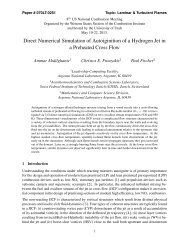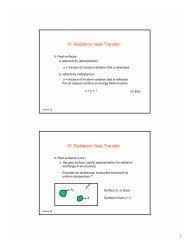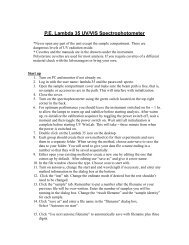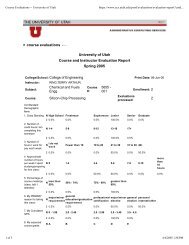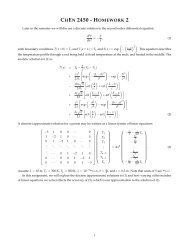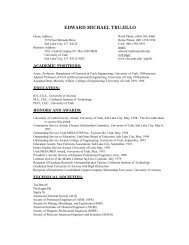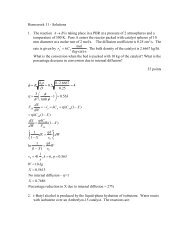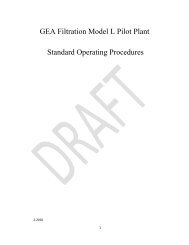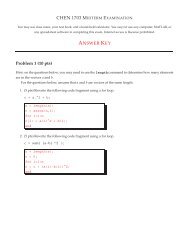Determining Density Using the Pycnometer Pycnometer - empty ...
Determining Density Using the Pycnometer Pycnometer - empty ...
Determining Density Using the Pycnometer Pycnometer - empty ...
You also want an ePaper? Increase the reach of your titles
YUMPU automatically turns print PDFs into web optimized ePapers that Google loves.
Pycnometric method: Obtain a pycnometer and glass<br />
stopper from your lab instructor.<br />
Carefully clean <strong>the</strong> glassware with soap and water and <strong>the</strong>n<br />
rinse with a small amount of acetone<br />
as described above. Weigh <strong>the</strong> dry flask and stopper on <strong>the</strong><br />
analytical balance in <strong>the</strong> balance<br />
room. Determine <strong>the</strong> exact volume of your pycnometer by<br />
filling it fully with water, inserting<br />
<strong>the</strong> stopper, and tapping <strong>the</strong> sides gently to remove <strong>the</strong> air<br />
bubbles. Dry <strong>the</strong> sides and weigh <strong>the</strong><br />
full pycnometer on <strong>the</strong> analytical balance. Measure <strong>the</strong><br />
temperature of <strong>the</strong> water. Use <strong>the</strong> known<br />
density of water located in <strong>the</strong> CRC handbook to determine<br />
<strong>the</strong> volume of water contained in <strong>the</strong><br />
full pycnometer flask. Be certain to use <strong>the</strong> known density<br />
value at <strong>the</strong> correct temperature.



